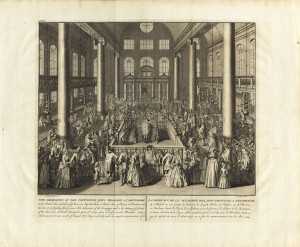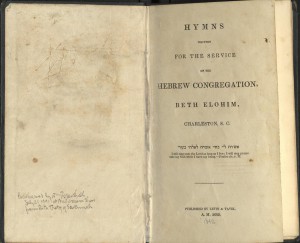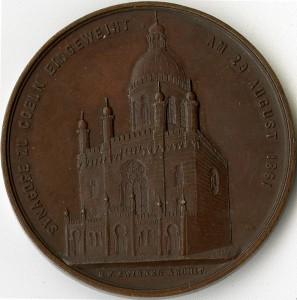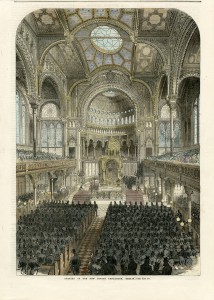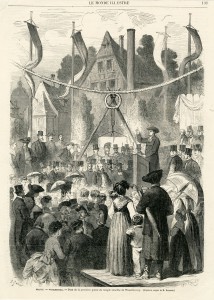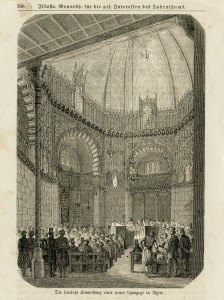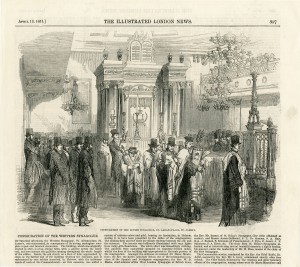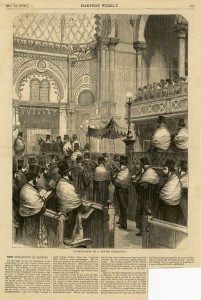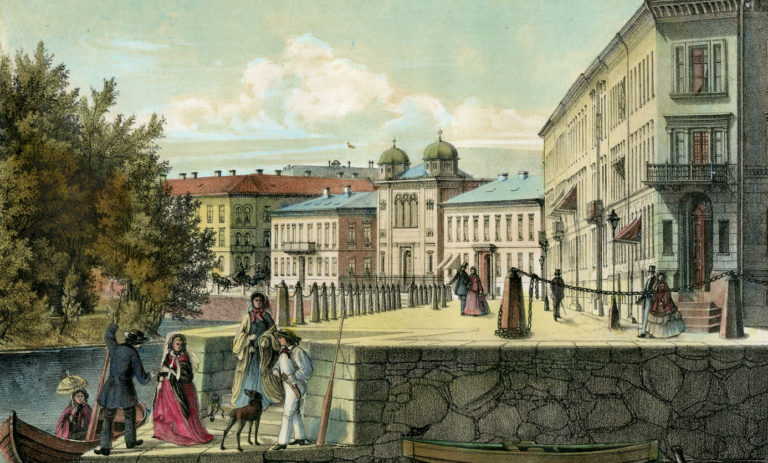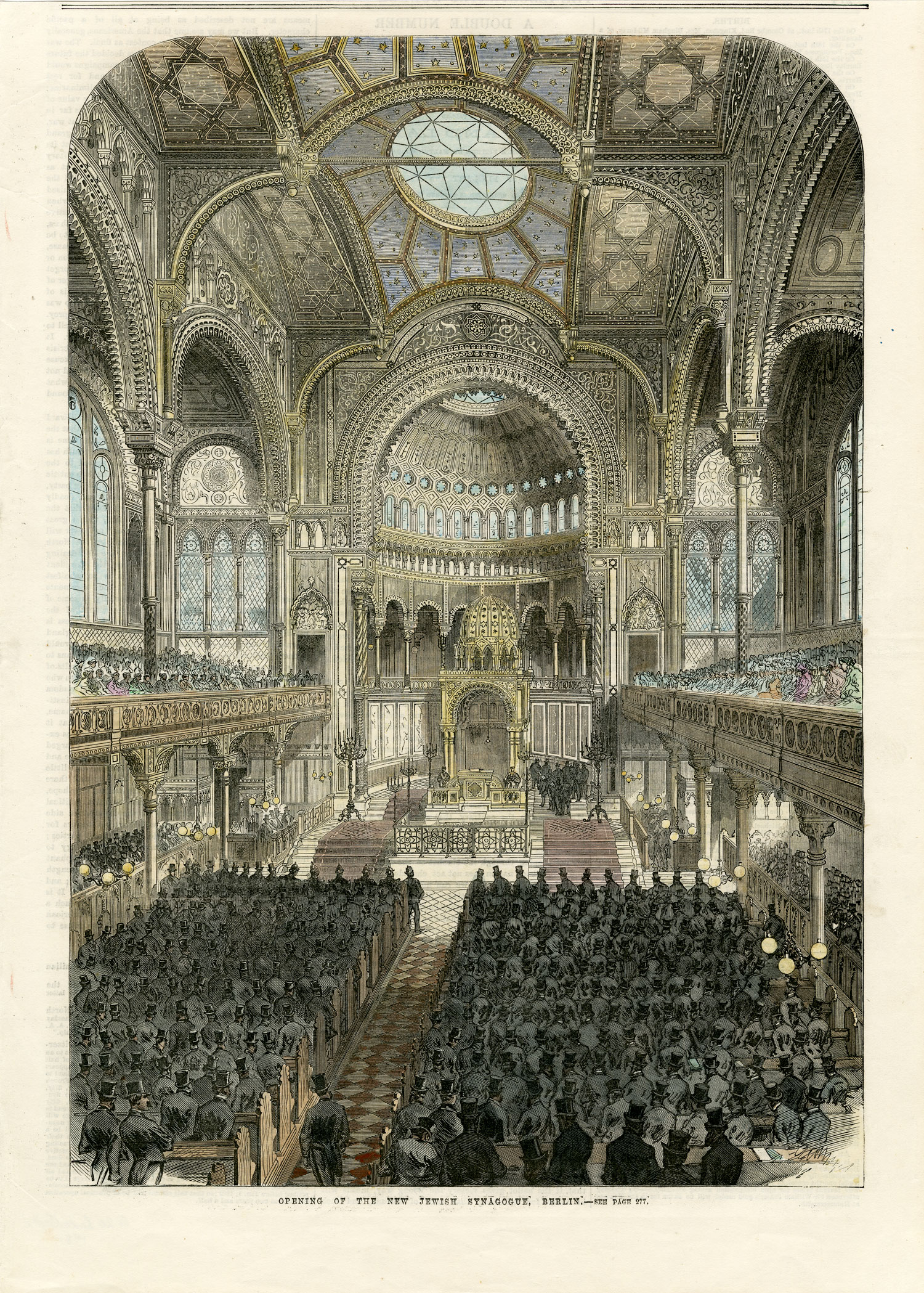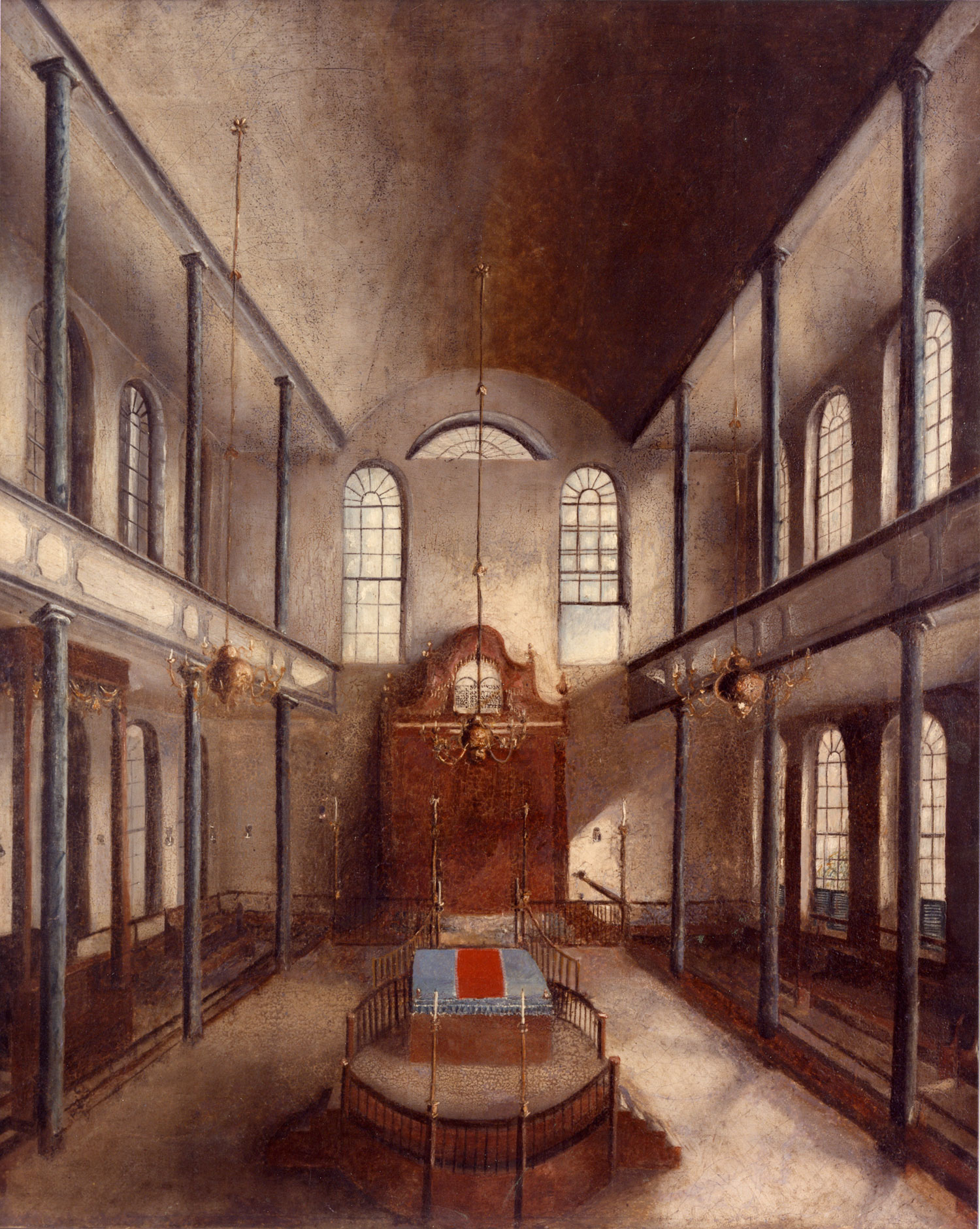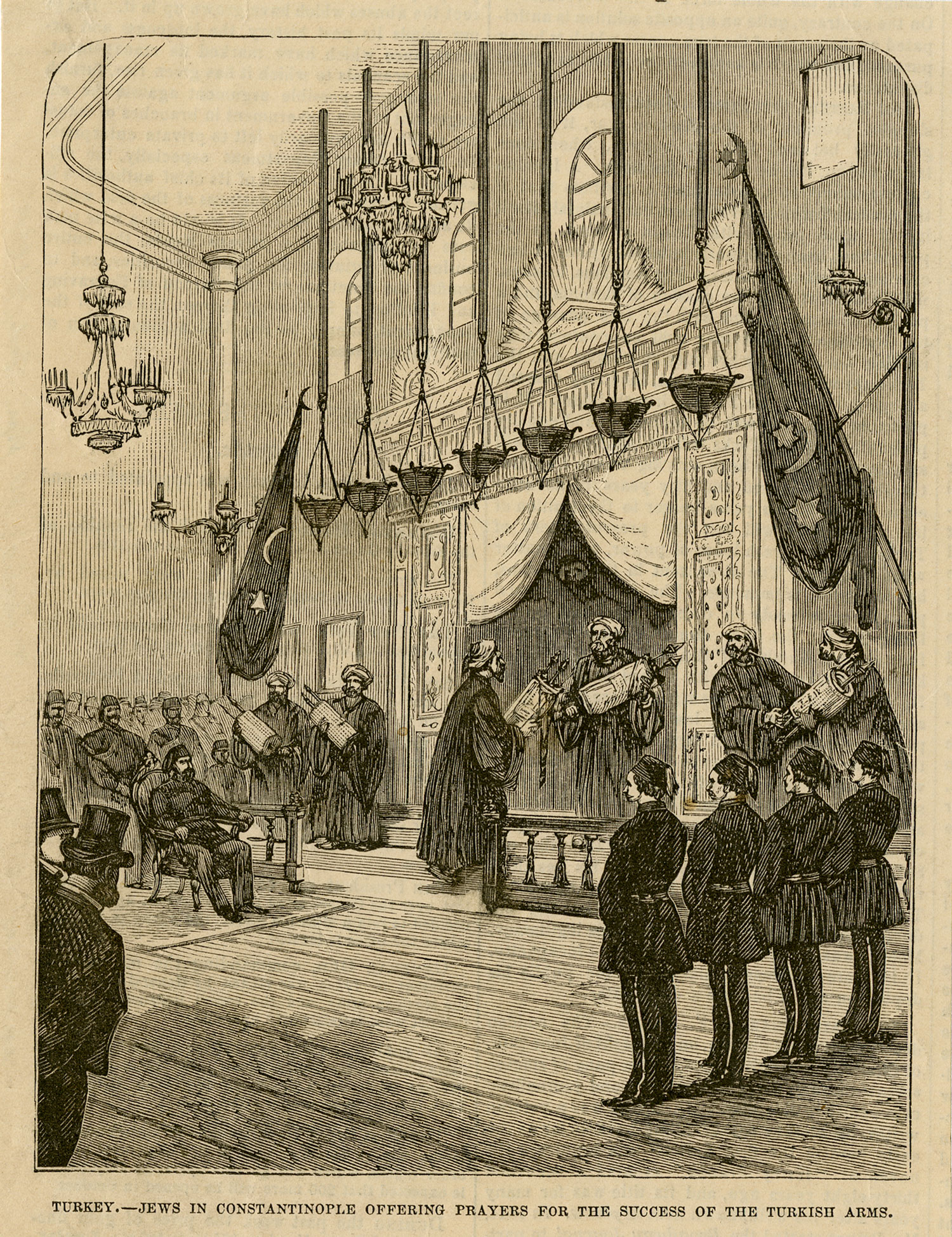Section 2. Buildings and Dedications
No matter where or when, the building and dedication of a new synagogue has always been an important event in the life of a Jewish community, involving high and low, rich and poor. Between Antiquity and the Modern Era, Christians and Muslims imposed many limitations on Jews who wanted to repair existing synagogues or build new ones. For example, restrictions were placed on the locations of synagogues (concealed from public view or on the outer limits of cities), heights of synagogues (not taller than neighboring churches or mosques), sizes of synagogues (specified dimensions), and the number of synagogues permitted in a city. Circumstances differed from place to place and century to century, but while often difficult, Jewish communities did succeed in overcoming these restrictions.
Christians frequently were involved in synagogue building, not only as workers, but occasionally as sponsors. In Early Modern Poland, nobles invited Jews to their towns to bolster local commercial economies and offered to help build synagogues as an incentive, while in 19th-century France, synagogue building was in part a state enterprise, as religions had government support. In the United States, during the same period, foundation stones were often laid amidst Jewish and Masonic rituals, and both Jewish and Christian clergy, as well as civic leaders—from mayors to presidents—often spoke at the ceremonies.
Large celebrations at synagogue dedications were first widely reported in 17th-century Amsterdam, when such ceremonies took on a new form including not just members of other congregations and delegations from other cities, but also non-Jewish dignitaries and the general public as well. The 1675 dedication of the Portuguese Synagogue, for example, was celebrated for a week with services, music, fireworks, art, poetry, and publications. To mark the occasion, Dutch artist Romeyn de Hooghe made a series of prints, showing the interior of the synagogue filled with worshipers and curious visitors.
As more and increasingly larger synagogues were erected in the 19th century, often with governmental encouragement, inaugural events frequently were covered in the ever-expanding print media. In some cases, groundbreaking, or the laying of a foundation stone, was newsworthy enough to warrant not only an article but also an accompanying illustration, as in the case of the synagogue of Wissembourg, France.
Events seemingly of local interest were regularly picked up by publications in other countries, and people from far away could read of parades and elegantly attired congregants. Words and images painted a clear picture of Jewish individuals and institutions becoming more integrated into the social order. Beginning in the 19th century, newspapers often printed summaries or full texts of the speeches of rabbis and dignitaries, testifying to the sense of celebration and commemoration that accompanied the building of a new synagogue.
